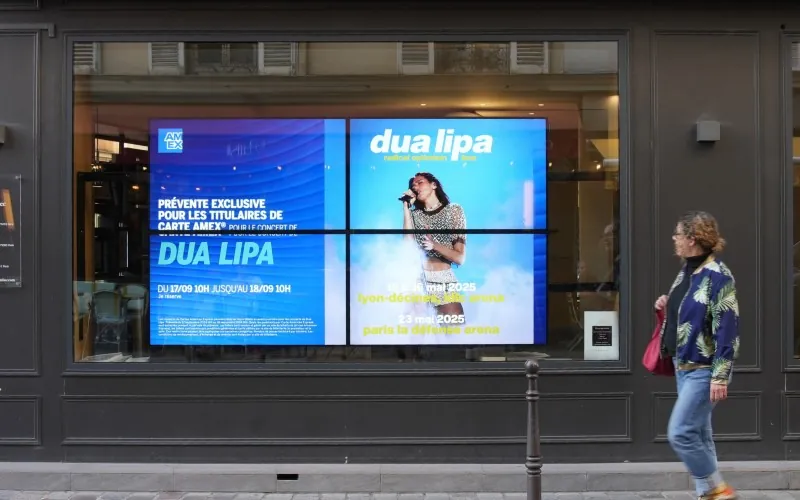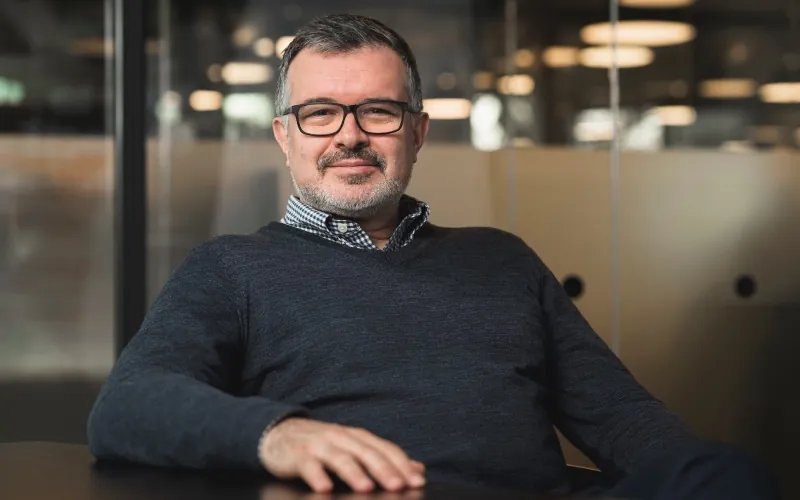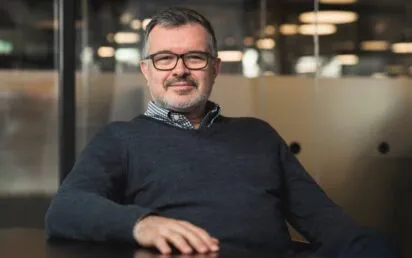When Jean-Christophe Conti took the helm at VIOOH in 2018, he wasn’t just building a new company – he was working to future-proof an entire advertising medium.
Now, seven years later, the London-headquartered business is doing just that. Ranked at the summit of BusinessCloud’s MarTech 50 for 2025 and operating in 30 markets worldwide, VIOOH is at the forefront of transforming how out-of-home (OOH) media – such as roadside billboards – is traded in the digital age.
At the heart of VIOOH’s mission in 2025 is a clear ambition – to integrate OOH into the broader digital media mix.
“We’ve tried to keep doing what we want to do, which is educating the market and encouraging brands to spend more with us because we can be a benefit to them,” said Conti.
“OOH is growing. It’s a reliable and efficient medium – no bot traffic, no fraud, no brand safety issues.
“We now want to bring it into the mix alongside social, search, video. That means having more meaningful discussions with media agencies about reallocating budgets.
“Frankly, my point to the team has been – if we can get just 10% of mobile investment redirected into programmatic OOH, we’ve nailed it.”
That bold vision is rooted in the reality of today’s ad landscape. While global digital advertising exceeds $700-800bn annually, the entire OOH industry – across traditional, digital, and programmatic – stands at just $45 billion.
The gap represents both the challenge and the opportunity Conti is targeting.
From concept to execution
“We started VIOOH around March 2018,” said Conti. “Here it was obviously all about trying to develop the VIOOH brand, develop the VIOOH solution in the programmatic digital out-of-home (DOOH) dimension.”
At the time, programmatic DOOH was still largely unexplored.
“It’s a very interesting medium and a medium that hadn’t been traded programmatically before,” he said. “So we were really pioneering this kind of dimension back then.”

The idea was born from the strategic foresight of JCDecaux, says Conti.
“VIOOH started from the willingness of JCDecaux, which is the leading player of the out-of-home industry,” Conti explained. “They really wanted to be able to say: how could we avoid [the fate of] the print industry? And they really wanted to create a SSP (supply-side platform), which VIOOH is.”
Conti, a former Yahoo executive brought in for his digital advertising experience, understood the risks of stagnation in a rapidly changing media landscape.
“The model was: let’s not make the same mistakes that the print industry or newspapers have done because they were not able to work together,” he said.
“I wasn’t coming from the out-of-home industry, but what I love about the media is that it’s a medium which is so great and efficient. You cannot avoid it. It’s there and it’s impacting.”
Transforming static spaces
VIOOH set out to do more than digitise paper posters.
Conti explained: “We went from traditional billboards, which were adverts printed on a piece of paper and glued to a wall, to a screen.
“When you get there, you need to think about how you can leverage digital advertising.
“With programmatic, campaigns become dynamic and adaptable. You can start to refine and not have a static campaign, but to start to be educated about what you want to buy, when you want to buy it and when it works better for you.
“You can set up a deal, and they will activate the deal with a trigger. For example, if you set up a campaign to advertise about hayfever treatments, the trigger is a certain point on the pollen index, pre-planned, but you activate it just if the condition is met.”
Yubico co-founder named EY World Entrepreneur of the Year 2025
Built to scale in a crisis
Despite launching just two years before COVID-19 hit, VIOOH not only endured the disruption – it expanded rapidly.
“During COVID, you would expect that having an out-of-home advertising when everybody is stuck at home, that’s not necessarily really good timing, right?” Conti said.
“All my friends were making fun of me. They were saying ‘what a good idea this is, good luck mate’.
“But we defied expectations. We grew by 500% during those years (2020–2021). This was because not everybody in every market was stuck at home.
“The real key was flexibility. What brands wanted is to be able to have the capacity as a brand, to stop advertising on the day almost at the hour. And that’s a capacity we were offering.
“Media owners also understood that programmatic could be a complementary sell channel to the way they were selling in a traditional way and that was really what accelerated the industry.”

Going global
VIOOH now employs 180 people and has scaled to major international markets, including the UK and Europe, Australia, the US, Brazil and China.
“We are operating in 30 markets right now, including China, Japan, US, LATAM, Brazil, Colombia and so on,” said Conti.
“We’ve got some partners who have screens on Times Square. We’ve got some partners in Brazil. So we’ve got a huge footprint.”
“Three years ago, we grew by 100 per cent; two years ago, 75 per cent; last year, 42 per cent. We’re still growing a lot.”
“We are not just working with JCDecaux, we are also working with many other media owners – more than 25 different partners who are not JCDecaux.”
Conti remains optimistic and ambitious about where the medium is heading.
He concluded: “I absolutely believe – and I’m bullish on this – this medium is going to be growing. I’m most excited by that.”


